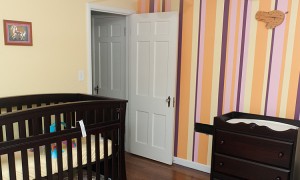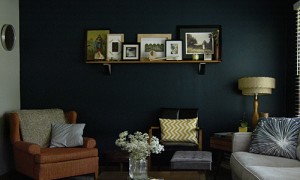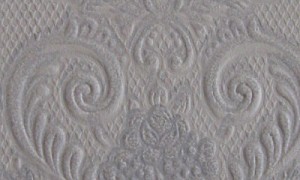Accent walls can be the subject of fierce debate. Some design experts think they look dated, while others think the walls are a great way to add some excitement to a room or improve an otherwise dull interior. Creating an accent wall in your home lets you play around with a color you like without committing to using it everywhere or experiment with wallpaper without committing to covering the entire room. An accent wall can also be a great way to highlight a particular interest or to tie the room’s purpose into its decor. For example, if you’re decorating a game room, you can devote one wall to a mural featuring Philadelphia sports teams.
Choose the Right Wall
Accenting the wrong wall can derail your decorating efforts, according to licensed property staging consultant Kristie Barnett. Start off by choosing a wall that deserves to be accented. It might have some architecture on or around it that demands attention, such as a fireplace, a picture window, or molding. The accent wall can also be a wall anchored by a large piece of furniture, such as your bed or a couch.
Select a Visual Approach
Although a single bold shade of paint might be a popular pick, it’s not the only way to accent a wall. You can also use paint to create a pattern on your wall, such as thick stripes, a chevron design, or a checkerboard. Accent walls give you a chance to have some fun with wallpaper, too: You might choose a bold pattern that’s visually striking but would be too overwhelming spread over all four walls of the room.
If you’re renting your home and can’t make permanent changes to the walls, you might use removable wall decals to create your accent wall. Wall decals are available in a number of different designs and patterns, from inspirational quotes to wall-filling silhouettes of trees or cityscapes.
Getting It Right
Beyond choosing the right wall to focus on, you want to make sure what you do to the wall coordinates with the rest of the room. If you’re sticking with paint, pick a color that complements whatever color you’re using for the rest of your walls and with your furniture. A bright pink accent wall might be overwhelming if, say, you have a lot of bright pink furniture but if you have ivory walls and gray or neutral furniture, a pink wall might work nicely.
The same rule holds if you’re using a pattern or design on the accent wall. The design should complement the other areas of the room, both in terms of color and the size of the pattern. For example, a very large mural might overwhelm a small bedroom in a Philly rowhome, but it might be a lovely approach for an expansive living room wall.
Accent walls are a low-commitment way to add some visual interest to a room, and one of the great things about them is that it’s a snap to update them. While it might not be a project you take on every season (or even every year), changing up or removing your accent wall is easy: Simply paint over it or peel off the wallpaper, and start over.
Image Source: Flickr/Nancy Hugo
[cf]skyword_tracking_tag[/cf]







[…] post Use Accent Walls to Add Some Oomph to Your Decor appeared first on Coldwell Banker Blue […]
[…] post Use Accent Walls to Add Some Oomph to Your Decor appeared first on Coldwell Banker Blue […]
[…] Accent walls are a low-commitment way to add some visual interest to a room, and one of the great things about them is that it’s a snap to update them. While it might …read more […]
[…] Use Accent Walls to Add Some Oomph to Your Decor […]
[…] post Use Accent Walls to Add Some Oomph to Your Decor appeared first on Coldwell Banker Blue […]
[…] Accent walls are a low-commitment way to add some visual interest to a room, and one of the great things about them is that it’s a snap to update them. While it might …read more […]